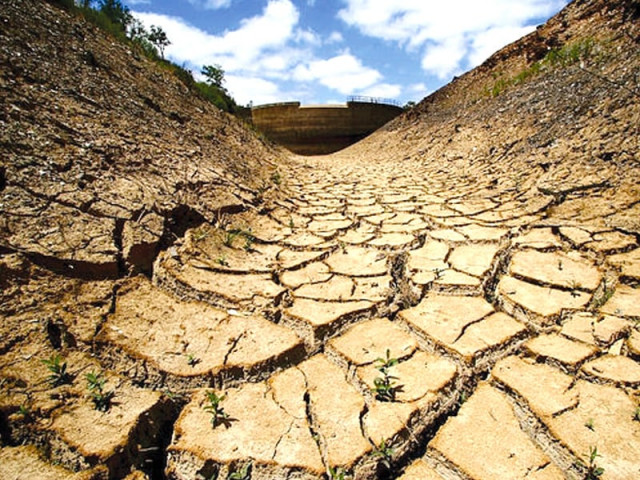Budget: Allocation for water resources sees dip in next fiscal
13% of development budget set aside for water programmes.

Funds for developing the all-important water resources have shrunk to about 13% of total development budget for 2012-13 and this comes at a time when the country is going to enter the ranks of water-scarce countries with a significant gap between demand and supply.
Over the past five years, allocation for water resources has remained between 16% and 20% of the development budget, but for upcoming fiscal year 2012-13 the allocation has dropped to about 13% or Rs47.2 billion.
Though this figure is higher than the revised allocation of Rs36 billion for the outgoing financial year, in percentage terms it has declined.
“The issues in the water sector have continued to mar the progress of agricultural sector and the country appears to have missed the fund utilisation target for the ongoing financial year. The implementation of all development programmes has remained slow and it is expected that by the end of June, Rs30 billion will be released and utilised for water projects,” reveals the Annual Plan 2012-13.
The country’s water storage capacity is inadequate and it has only two major reservoirs – Tarbela and Mangla – where water has touched the dead level in recent months, making it impossible to meet water needs of provinces.
According to the annual plan, Pakistan is water-stressed and fast becoming a water-scarce country. There is a strong possibility that the water economy will run dry, leading to severe water crisis.
However, to be able to avert this situation, the plan says, Pakistan needs to readjust investment priorities and realign strategies to optimise water productivity. The irrigated agriculture contributes a major share to the GDP and the industry like textile, mining and coal exploitation also depends on water.
In the plan, the government has identified some major deficiencies. Water storage efficiency is 9% compared to the world average of 40%. There are also extensive seepage losses due to poor operation and maintenance of the irrigation system. Excessive groundwater pumping and poor coordination among water, agriculture and rural development research institutions are the other factors impeding the development of water resources.
In 2011-12, the water sector development programme focused on construction of small and medium-sized dams, new canals, rehabilitation and remodelling of irrigation system, safe disposal of drainage effluent and flood control.
In addition to these, maximum resources were allocated to complete ongoing projects and high-priority water storage dams in an effort to overcome scarcity. However, the targets could not be achieved due to financial constraints and late and less release of funds.
Estimated water losses to be saved at farm gate and additional water to be made available due to completion of small dams in Balochistan, Sindh and Khyber-Pakhtunkhwa are expected to be about 0.75 million acre feet (MAF) in 2011-12.
Progress on fast-track (high-priority) projects namely Mangla Dam raising, Satpara and Gomal Zam dams remained satisfactory while work on new canals (Kachhi and Rainee canal), lining of irrigation channels and improvement of irrigation infrastructure in Punjab, Sindh and Khyber-Pakhtunkhwa remained below target due to financial stress.
In the new fiscal year beginning July, water availability at farm gate is expected to be about 142 MAF through surface water supplies by making canal withdrawals, canal lining and remodelling, irrigation system rehabilitation and improvement programme and construction of small and medium dams.
About 48.63 MAF of water would be added to the system from underground fresh water aquifer, mainly through private tube wells.
Published in The Express Tribune, June 3rd, 2012.











1726134115-0/BeFunk_-(41)1726134115-0-208x130.webp)







COMMENTS
Comments are moderated and generally will be posted if they are on-topic and not abusive.
For more information, please see our Comments FAQ